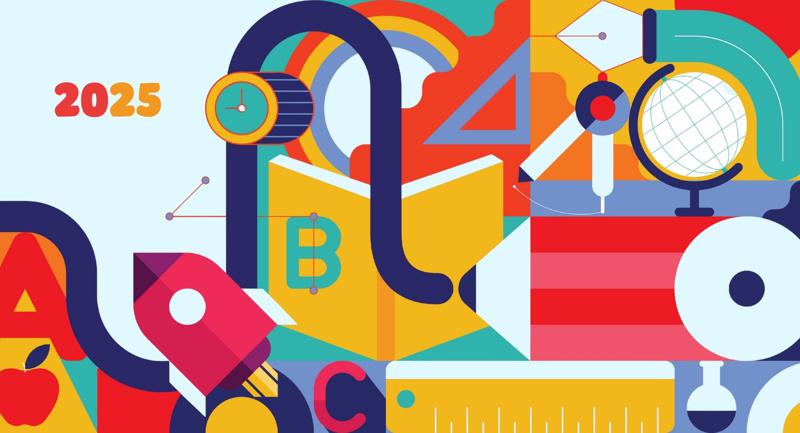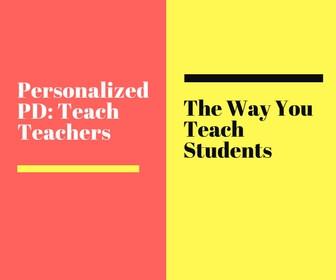Teachers struggling in the classroom? Hire an instructional coach. Coaching has become wildly popular in the last several years, and books like Get Better Faster, Instructional Coaching by Paul Bambrick-Santoyo, The Art of Coaching by Elena Aguilar, and The Definitive Guide to Instructional Coaching by Jim Knight can be found stacked on educators’ bookshelves across the country.
But what about coaching for administrators—including principals, assistant principals, deans, and other school leaders? All districts have maintained positions for supervising school leaders, namely the superintendent. Larger districts may even have principal coaches, individuals not in evaluative roles whose sole focus is capacity building on a narrow set of skills. While trusted sources like the first-ever standards for principal supervisors published in 2015, resources for principal supervisors from the Wallace Foundation, and models of district-led trainings provide starting points, these coaches need more specific and effective strategies to choose from when it comes to coaching principals.
Over the past seven years as a principal coach, I have studied patterns in coaching leaders. The five strategies described below leverage what principal coaches may already know about teacher coaching and apply these practices to principal coaching. Principal coaches should focus on 1) defining the bar, 2) collecting evidence, 3) developing action steps, 4) encouraging practice, and 5) following up. Here’s what these strategies look like in practice.
1. Defining the Bar
Coaching principals is inherently more complex than coaching teachers because principals’ jobs are not as clearly defined. Rubrics abound to evaluate teachers, but there are fewer for principals. Tools like the Professional Standards for Education Leaders (formerly known as the ISLLC standards), McREL’s Principal Evaluation System, and helpful articles such as "What Great Principals Really Do" provide initial clarity, but it is critical to more thoroughly “define the bar” for what effective principal leadership means.
Coaching principals is inherently more complex than coaching teachers because principals’ jobs are not as clearly defined.
Individually, principal coaches can begin by asking themselves, What does excellence in this role look like? What are the key characteristics, attributes, or behaviors that I am aiming to foster in the person I am coaching? If there are multiple principal coaches in a district, it is crucial to develop a common language on what effective school leadership looks like. To create this normed understanding of good school leadership, district staff, including principal coaches and superintendents, may consider the following questions:
- Are we looking for general qualities of leadership? Or are there specific skills that we are looking for our principals to demonstrate? If so, what are those specific skills?
- Within the context of our district, are there certain competencies that are more critical than others?
- What are the most critical qualities for our school leaders to uphold?
- What are the most critical actions for our school leaders to take?
- What evidence do coaches need to gather to show competency in specific areas?
- Where do we see the school leadership role going in the next five to 10 years?
Answering these questions allows districts to establish what effective principal leadership means in their local context. Their answers can also drive professional learning for aspiring leaders, strengthen interview processes, and help create evaluative tools. Most importantly for principal coaches, these answers will drive the scope and depth of their work. As contexts shift, such as the implementation of a new strategic plan or changes in learning formats, these attributes of effective school leadership should be re-examined.
2. Collecting Evidence
Both teacher and principal coaching conversations must be grounded in information collected through observation, reviewing planning materials, or analyzing data. Such information provides concrete evidence to help coaches determine what to prioritize in coaching conversations. But collecting evidence for teachers and for principals involves different steps:
Teacher Coaching | Principal Coaching |
|---|---|
| OBSERVATION: Low inference notes collected during classroom observation. | OBSERVATION: Low inference notes collected during coaching or feedback conversation with a teacher, staff meeting or professional development, and interactions in the office or hallway. |
| PLANNING: Review of lesson, unit, and yearlong plans. | PLANNING: Review of strategic plans, change management, professional development, or plans for coaching a teacher. |
| DATA REVIEW: Review of existing student achievement data and student work. | DATA REVIEW: Review of schoolwide data such as student/teacher attendance or student achievement. |
3. Developing Action Steps
In essence, action steps are the “objectives” of coaching conversations—think “teacher will be able to….” For teachers, this usually means building concrete and practicable skills that impact student learning. The most effective teacher-focused action steps meet the following criteria for success (adapted from Bambrick-Santoyo, 2016):
- Highest Leverage: The action step will greatly impact student learning.
- Narrow: The action step can be learned within a week.
- Specific: The action step is clearly defined, including smaller stages in the process of becoming proficient in the step.
- Transferable: The action step can be translated across classes, sections, units, etc.
For principals, these criteria share terminology but are applied differently. Unfortunately, principals juggle so many due dates, checklists, reports, and other tasks that conversations with a principal coach often boil down solely to prioritization. For some principals, this type of support is exactly what they need, and they leave a coaching conversation with a clear and prioritized list of actions to take. But while useful in the short term, these types of actions do not help build skills over time. Therefore, principal coaches should consider the following criteria for effective principal-facing action steps:
- Highest Leverage: The action step would mean the most for student learning at the individual classroom, team, or school levels.
- Narrow: Principals can practice and become proficient with the step within a week.
- Connected to Evidence: The action step should be grounded in evidence for that specific school and context, rather than based on district-level assumptions.
- Transferable: The step can translate outside of a specific situation, or the principal can glean key reflections from the step going forward.
For principals, an ineffective action step might be: “Write a professional development plan for 3rd grade teacher, Mr. Williams.” In contrast, an effective action step might be: “Craft professional learning goals that are: 1) connected to the evaluation tool you are using, 2) most critical to the classroom based upon evidence collected, and 3) time-bound and realistic.” The first presents a discrete task to complete one time; the second explains the skills underlying professional development tasks in the present and future.
In other words, principal coaches can think about action steps as instructive and practical. Next time this principal has to write a professional development plan, they will be able to recall skills they practiced, review their specific example from Mr. Williams, and replicate the task again without a coach’s help.
4. Encouraging Practice
Every coaching conversation–for teachers and principals–should include an element of practice driven by the previously established action steps. Teachers practice action steps during coaching sessions and in the classroom (or in their planning for in-classroom instruction). Principals, however, can practice in a number of contexts: in staff meetings, during professional development, in classroom observations, during coaching conversations, and in professional learning communities. Principal coaches must identify the most authentic place where a principal can demonstrate the skill developed in the coaching session. Principal coaches can then make a plan for how to observe and give feedback.
5. Following Up
Coaches are not only building principals’ technical skills; they are working actively to create reflective individuals who are developing as people. Follow-up should allow individuals to acknowledge their progress and reflect on what they have learned about themselves in the process. Consider once again the case of Mr. Williams’ professional development plan. Together, the coach and principal could examine Mr. William’s PD plan, and the coach could describe what makes an effective PD plan generally. The principal could then write a PDP that is connected to evaluation tools, evidence, and measurable goals, making the coaching conversation even more transferable.
Accelerating Growth
Teacher and principal coaching present many similarities–and some subtle but critical differences. Principal coaching should begin with a clearly defined bar of excellence. This bar drives our action steps, which are developed by collecting thoughtful evidence. Most importantly, these action steps are practiced and followed up on so that skills become transferable.
Principal coaches have the ability to make a significant impact at the district level by moving entire schools, teams, or classrooms forward.
Principal coaches have the ability to make a significant impact at the district level by moving entire schools, teams, or classrooms forward. By applying what they know about teacher coaching to principal coaching, principal coaches can more easily tap into an existing skillset to accelerate principal growth.








